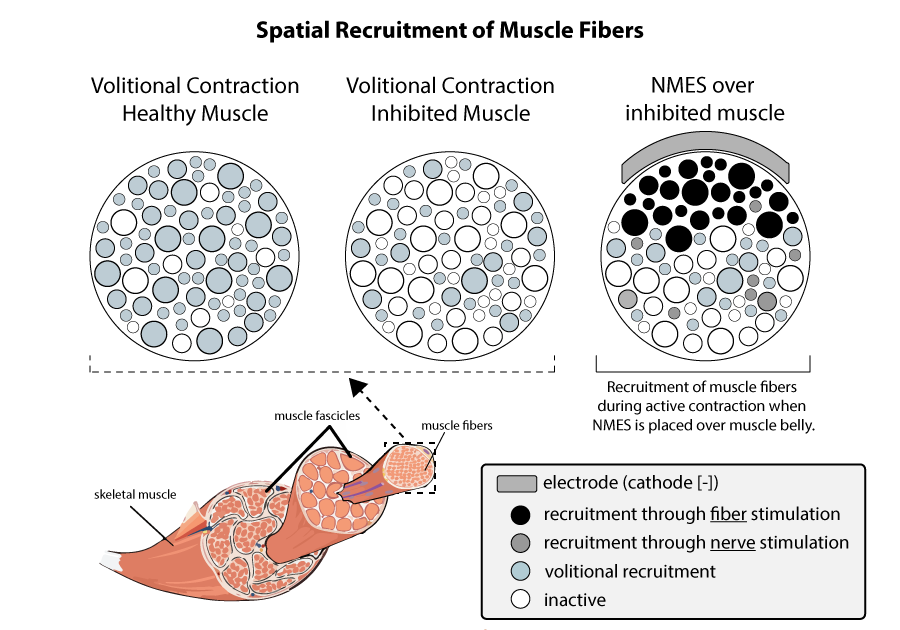Neuromuscular Electrical Stimulation (NMES)
What do I need to know?
Arthrogenic muscle inhibition (AMI) prevents our patients from voluntarily activating their full muscle capacity after knee injury-e.g., ACL injury and osteoarthritis [OA]. Neuromuscular electrical stimulation (NMES) uses electrical current to artificially contract inhibited muscles fibers. This artificial contraction serves as an internal mechanical stress, which combats atrophy mediators. When applied during therapeutic exercise, NMES may help retrain recruitment of motor neurons and improve force production. Over time, NMES can reduce the amount of atrophy that typically sets in during periods of inhibition and nonuse - thereby preserving muscle strength and capacity.
NMES circumvents inhibited motor neurons through direct stimulation of the muscle.
Clinical bottom line.
When used during exercise, NMES helps minimize strength and muscle volume loss in early phases of recovery and improve voluntary recruitment of motor neurons. The use of NMES may be the most beneficial during early phases of recovery but may become less effective as patients’ strength and voluntary muscle activation is restored.
Things to know about NMES Contractions
Electrically induced contractions are different than natural contractions in three ways (Barss et al, APMR, 2018; Bergquist et al, EJAP, 2011):
Only the muscle fibers stimulated by the current are contracted. Natural contractions occur through activation of motor units, which innervate muscle fibers through the muscle fascicle. In NMES, fibers are not recruited through motor units, instead muscle fibers closest to the current are preferentially activated.
The recruitment schema is reversed. NMES preferentially activates large muscle fibers first and all fibers turn on at once. Whereas natural voluntary contractions preferentially activate small muscle fibers first and there is a consistent motor unit firing train.
The timing of muscle fiber recruitment is stimulus-locked. Natural contractions recruit motor-units asynchronously, which your central nervous system regulates to achieve consistent contraction through time (e.g., discharge rates are variable). In NMES, all muscle fibers contract in response to the stimulus, which you set using the stimulator device (phase duration and frequency).
So how do I apply it correctly?
Dive deep into the background and evidence supporting NMES in our member area. We also describe exactly how to prescribe and use it, including pad placement and size, tuning parameters, and dosage. You can also find a brief how to guide for parameter tuning here.


